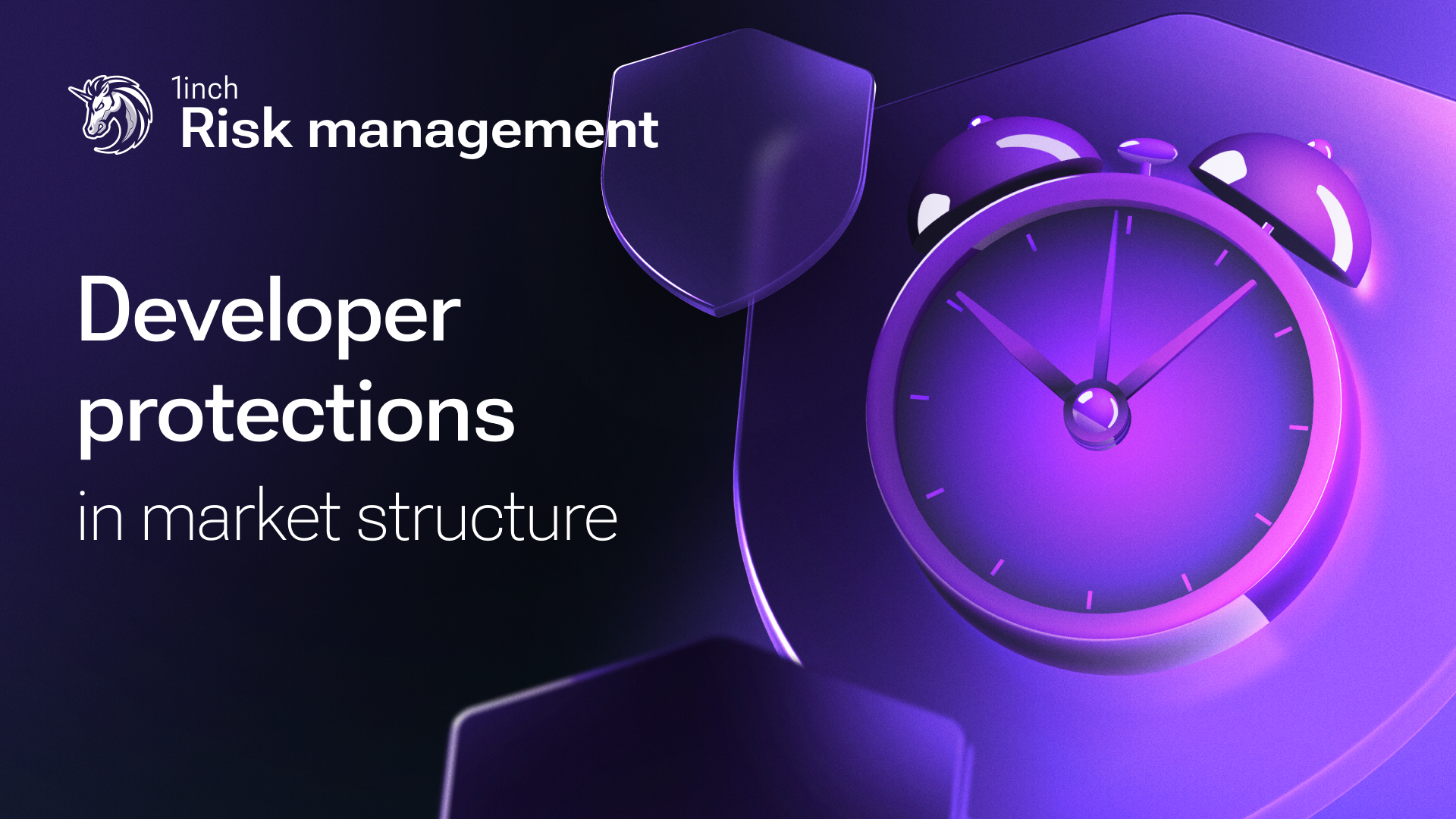Navigating trading strategies to profit from crypto

A wise use of different trading strategies can help traders to stay profitable through bullish and bearish cycles.
Professional traders use various trading strategies, often combining them or switching from one to another.
Advanced strategies usually require proficiency in technical analysis (TA), a method used to evaluate market trading opportunities by analyzing price movements and asset volume data. Meanwhile, a basic understanding of market trends might be sufficient for simpler strategies.
Charts reflecting an asset’s prices within specific time intervals can be found on various web resources like Coinmarketcap. The 1inch Wallet app for iOS also provides access to the charts and enables users to create watch lists for specific tokens to follow their value fluctuations.
Long-term trading strategies
Long-term trading styles are less risky and sometimes quite passive, involving just buying and holding certain tokens. Similarly, they are not so stressful as they don’t require monitoring the market on a daily basis. You can also read this article for more information on choosking assets for long-term trading strategies.
- Holding, buy-and-hold or HODLing means buying crypto and not selling it even in case of price changes in the market. A patient holder waits for considerable value growth. The term HODL is frequently used when describing this strategy, which is an acronym for “holding on for dear life” but actually comes from the misspelling of the word “holding” in a popular post. It may take a long time to make a good profit, and a trader needs to pick the right moment to purchase an asset, which is usually when the market is down (bear market) and the overall prices are low. By hodling, traders can earn well without much risk and effort, but it may take years before the next crypto cycle changes. This article describes crypto cycles in more detail, mainly focusing on the current bear market.
- Dollar-cost averaging (DCA) involves splitting an amount of money to invest and buying a small number or lump of assets over a regular period. A trader chooses an asset to invest in and purchases, for example, $100 worth of it once a week. DCA implies regularly buying a fixed amount of an asset regardless of market movements. This could work for both short-term and long-term strategies, as it allows traders to mitigate the impact of the market’s highs and lows.
- Position trading usually requires holding assets for more than a month and serves as an alternative to the buy-and-hold strategy. It involves tracking price movements of an asset over a long period of time to identify major trend reversals. Position trading can be a transitional step to more active strategies for the beginner, since it helps to learn how to make long-term bets based on market analysis. At the same time, it requires just basic knowledge of market cycles.
Some traders follow bull cycles to go long (to buy cheaper and sell more expensive), while others wait for a bear market to go short. Cryptocurrency can be shortened in different ways. However, one of the most common ones is borrowing a certain amount of assets and selling it while the price is high to repurchase it and repay the loan when the price declines. Shorting carries high risks, since, if the price rises instead of falling, the trade results in significant losses.
Medium and short-term trading strategies
An active trading approach requires ongoing market monitoring and entails a higher risk. Meanwhile, short-term strategies can generate regular income.
- Trend trading is a medium-term strategy often used by position and swing traders. If traders believe an asset’s price will continue to go up, they take a long position and go short if the trend is downward. Insignificant price movements are not taken into account, as traders tend to trade in the same direction as the trend in an effort to capitalize on its continuation.
- Range trading is based on the idea that assets are traded in a certain range value over a period of time. Being basically similar to trend trading, this strategy is not connected to the market direction but is focused on prices, often trading through the same levels. For example, if an asset has been trading within the $1,200-$1,400 range for a month — this is its price range. Traders aim to buy at the lower point of the range and sell at the higher.
- Breakout trading requires waiting for the price to move out of its range. This strategy is mainly used by day and swing traders when looking for price points that determine the market’s sentiment. To make a profit, traders try to enter the market at the most appropriate level. For that purpose, they often place limit orders. Many breakout trading practices depend on volume levels, as a breakout occurs when volume rises.
Short-term trading strategies used by day traders
Day trading involves buying and selling within the same day and attracts users who feel confident in trading.
Gas fees paid on DEXes used to stop some day traders from taking advantage of the decentralized exchange at high volumes. With the Fusion update, 1inch set a new DEX standard without gas fees, making day trading at high volumes, on the contrary, more profitable.
- Swing trading is focused on catching the trend’s upswings and downswings, including the point after breaking out the range. “Swings” refer to price moves happening in short timeframes, like a few days or weeks. Similarly to ranges, the idea is to trade as long as the swing is active. Understanding if the strategy succeeds usually comes in less than a week, allowing traders to tweak it to the point of constant profit.
- Scalping is focused on trade quantity. Traders make dozens or hundreds of trades during the day since a small profit from an insignificant price fluctuation eventually turns into a heavy profit due to the number of trades and large amounts of funds exchanged. For example, you perform 50 trades in one day, bringing in an average profit of $10 each, taking into account unprofitable trades. Therefore, in one trading day, you can earn $500.
- Arbitrage is one of the most popular advanced strategies aiming to profit from the difference in the price of a cryptocurrency in different markets. A trader buys an asset on one market and sells it on another at a higher price. In the cryptocurrency market, the same asset can be traded at different rates across various exchanges depending on available liquidity and trading volume. Arbitrage is widely used and allows many traders to earn significant sums, but, as with many other short-term strategies, it requires traders to move fast.
Some traders use bots to automate the trade process, save time and increase the speed. Thus, in scalping, more trades can be performed within a day, while in arbitrage, market price differences can be identified in seconds. Relying on algorithms, machine learning and price patterns, bots can be used as a template and customized to fit individual strategy preferences. However, using bots means quickening the trading process rather than eliminating losses.
Beginners often tend to quickly change strategies in order to try them all. Meanwhile, strategies have to fit the individual’s lifestyle. For instance, those who hold a full time job can experience stress with scalping. Meanwhile, someone trading on a part time basis will have more time to identify key trends to practice swing trading. To start with short-term strategies, traders can first test them on demo accounts dozens of times or with a small amount of money. But be aware that no matter what strategy you choose to follow, there is always a risk of losing your money.




























